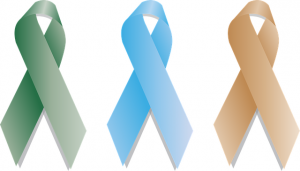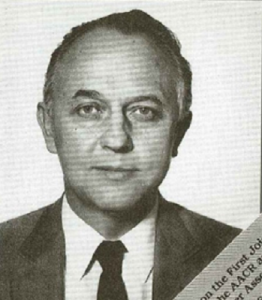
One of the big challenges in selenium research is the optimizing of the daily selenium intake to reduce the risk of prostate cancer. We need more research results to answer the following questions about the use of selenium supplements to reduce the risk of prostate cancer [Waters & Chiang 2017]:
- What is the optimal formulation of the selenium supplement?
- What is the correct daily dosage?
- What is the range of baseline blood selenium concentrations that indicates a need for selenium supplementation?
- What is the blood selenium level above which selenium supplementation will not reduce the risk of prostate cancer further?
The idea that selenium intakes and selenium status are an important determinant of prostate cancer risk began to receive considerable attention after University of Arizona Professor Larry Clark published the results of the Nutritional Prevention of Cancer Trial in JAMA in December 1996 [Clark 1996].
High-Selenium Yeast Supplements in the Nutritional Prevention of Cancer Trial
The Nutritional Prevention of Cancer Trial (NPCT) was a supplementation trial using 200 micrograms of a selenized yeast preparation or placebo for an average duration of 4.5 years. The study participants were 1312 men and women with an average age 63 years.
The NPCT study participants were mostly male, ca. 75%. Only approximately one in three participants was a current smoker. At baseline, the study participants had an average plasma selenium concentration of 114 micrograms per liter. The primary endpoint of the study was skin cancer recurrence [Clark 1996].
The selenium supplementation did not reduce the risk of skin cancer. However, the researchers found that the daily selenium-yeast supplementation significantly reduced the incidence of prostate cancer incidence by 63% [Clark 1996].
Synthetic Selenomethionine Supplements in the SELECT Trial
In 2001, motivated by the results of the NPCT study, researchers started the largest-ever prostate cancer prevention trial in men called the Selenium and Vitamin E Cancer Prevention Trial (SELECT).
In this new study, the researchers randomly assigned over 35,000 men aged 50 years or more to receive one of the following treatments:
- vitamin E
- selenium in the form of synthetic selenomethionine
- both vitamin E and selenium
- placebo
These men had an average baseline serum selenium concentration of 135 micrograms per liter. The primary endpoint was the incidence of prostate cancer [Lippman 2009].
Fully 78% of the study participants in the SELECT study had serum selenium levels that were above the lower two tertiles in the Nutritional Prevention of Cancer study. Consequently, these men in the SELECT study had baseline serum selenium concentrations above the serum levels of the Nutritional Prevention of Cancer study participants who benefited from selenium supplementation [Nicastro & Dunn 2013].
In 2008, an independent Data and Safety Monitoring Committee reviewed SELECT study data and found that selenium and vitamin E, taken alone or together, did not reduce the risk of prostate cancer. At this point, the SELECT study participants were told to stop taking their study supplements [Lippman 2009].
Please note: In 2008, there was no statistically significant difference in the rates of prostate cancer between the four groups in the study. There were more cases of prostate cancer in men taking only vitamin E, but the difference was not statistically significant [Lippman 2009].
In the 2008, there were also more new cases of diabetes in men taking only selenium compared with men taking placebo. This finding was also not statistically significant and did not prove an increased risk from selenium. Initial results of SELECT were published online in JAMA-Express on December 9, 2008, and appeared in the first print edition of JAMA in January 2009 [Lippman 2009]. There was no difference in the incidence of lung or colorectal cancers, all cancers combined, all deaths combined
In 2011, the SELECT study researchers reported that there had been more cases of men developing prostate cancer in the group of men taking the selenium supplement alone and in the group of men taking vitamin E and selenium together than there were in the group of men taking placebo; however, – a big however – the increases were small and were not statistically significant. They could well have occurred because of the chance assignment of men with particular characteristics to the selenium groups [Klein 2011].
Why the Differences in the Outcomes of the NPCT Study and the SELECT Study?
It can be said that the study participants in the NPCT study were lacking in selenium compared to the men in SELECT study (average baseline selenium level of 114 micrograms per liter compared to 135 micrograms per liter). Quite possibly, selenium supplementation reduces the risk of prostate cancer only in men who have low selenium status and not in the total population of men. Many of the study participants in the SELECT study may have been given supplements that raised their selenium status above the protective level.

The formulation of selenium used in the NPCT study (the high-selenium yeast formulation) contained a natural selenomethionine as its primary selenium species, but it contained an estimated 20 other selenium species, one or more of which may have been more important to cancer prevention than selenomethionine is. The men in the SELECT study received 100% synthetic selenomethionine.
Furthermore, as Professor Gerhard N. Schrauzer has pointed out, the SELECT study researchers were using selenomethionine in a pure form and not in a protein-bound form. The selenomethionine in high-selenium yeast preparations is protein-bound [Schrauzer 2009].
A U-Shaped Relationship Between Selenium Status and the Risk of Prostate Cancer?
Waters and Chiang have shown that toenail selenium concentrations in elderly dogs have a U-shaped relationship with DNA damage in the dogs’ prostates. (Dogs, like humans, develop prostate cancer)
Moreover, Waters and Chiang have demonstrated that the same U-shaped relationship describes the results from human selenium and prostate cancer studies. They have estimated the optimal range of serum/plasma selenium levels for the reduction of prostate cancer risk to be in the range 119–137 micrograms per liter [Waters & Chiang 2018].
Above this selenium level, selenium would provide little or no additional protection against prostate cancer and might even begin to be harmful at much higher levels. At selenium levels below 119 – 137 micrograms per liter, the risk of developing prostate cancer might increase because of inadequate selenium bio-availability [Waters & Chiang 2018].
Please note that the best protection against prostate cancer in the NPCT study was seen in men with baseline serum selenium concentrations less than 123.2 micrograms per liter.
Summary: Selenium Supplementation for the Prevention of Prostate Cancer
- A person’s serum/plasma selenium status seems to dictate how much selenium supplementation, if any, is needed to achieve and maintain the beneficial range between 119 and 137 micrograms per liter [Waters & Chiang 2018].
- A meta-analysis of 12 studies with 5007 cases of prostate cancer and a total of 13,254 participants showed that the risk of prostate cancer decreased with blood selenium levels from 60 micrograms of selenium per liter increasing up to 170 micrograms of selenium per liter [Hurst].
The safest range for potential reduction of the risk of prostate cancer seemed to be the plasma selenium concentration range from 120 to 170 micrograms of selenium per liter [Hurst]. - For people whose food intake of selenium is approximately 55 micrograms of selenium daily and whose baseline plasma selenium status is approximately 95 micrograms per liter, a 50-microgram selenium supplement daily should bring his/her selenium status up to 118 micrograms per liter. For the same person, a daily 100-microgram selenium supplement should increase the selenium status to 152 micrograms per liter [Hurst 2010].
- There seems to be a U-shaped curve describing the desirable selenium status for protection against prostate cancer. The bottom of the U is found between 119 and 137 micrograms per liter [Waters & Chiang 2018].
- High-selenium yeast formulations seem to be the preferable form of selenium. A comparison study has shown that healthy men who took high-selenium yeast supplements had significant reductions in bio-markers of oxidative stress following the supplementation; men who took selenomethionine supplements did not [Richie 2014].
The studies in which selenium supplementation has been associated with the prevention of various forms of cancer have been studies done with selenium-enriched yeast preparations:
- The Linxian Nutritional Intervention Studies, 1993
- The Selenium and Oral Cancer Study, 1995
- The Nutritional Prevention of Cancer Study, 1996
- The Qidong (China) Primary Liver Cancer Study, 1997
- The Qidong (China) Primary Liver Cancer Study, 2000
- The Su.Vi.Max Study, 2004 [Hercberg]
Sources
Clark LC, Combs GF, Turnbull BW, Slate E, & Alberts D. (1996). The nutritional prevention of cancer with selenium 1983-1993; a randomized clinical trial. JAMA, 276: 1957-1963.
Hurst, R, Armah, CN, Dainty JR, Hart, DJ, Teucher, B, Goldson, AJ, Broadley, MR, Motley, AK, Fairweather-Tait, SJ. (2010). Establishing optimal selenium status: results of a randomized, double-blind, placebo-controlled trial. Am J Clin Nutr, 91(4):923-31.
Hurst, R., Hooper, L., Norat, T., Lau, R., Aune, D., Greenwood, D. C., & Fairweather-Tait, S. J. (2012). Selenium and prostate cancer: systematic review and meta-analysis. The American Journal of Clinical Nutrition, 96(1), 111-122.
Klein EA, Thompson IM, Tangen CM, Crowley JJ, Lucia MS, Goodman PJ, Minasian LM, Ford LG, Parnes HL, Gaziano JM, et al. (2011). Vitamin E and the risk of prostate cancer: The selenium and vitamin E cancer prevention trial (SELECT). JAMA; 306:1549–1556.
Lippman SM, Klein EA, Goodman PJ, Lucia MS, Thompson IM, Ford LG, Parnes HL, Minasian LM, Gaziano JM, Hartline JA, et al. (2009). Effect of selenium and vitamin E on risk of prostate cancer and other cancers: The selenium and vitamin E cancer prevention trial (SELECT). JAMA; 301:39–51.
Richie, JP, Das, A, Calcagnotto, AM, Sinha, R, Neidig, W, Liao, J, & El-Bayoumy, K. (2014). Comparative effects of two different forms of selenium on oxidative stress biomarkers in healthy men: a randomized clinical trial. Cancer Prev Res (Phila). 2014 Aug;7(8):796-804.
Schrauzer, G. N. (2009). Selenium and selenium-antagonistic elements in nutritional cancer prevention. Critical Reviews In Biotechnology, 29(1), 10-17.
Waters DJ & Chiang EC. (2018). Five threads: how u-shaped thinking weaves together dogs, men, selenium, and prostate cancer risk. Free Radical Biology and Medicine, https://doi.org/10.1016/j.freeradbiomed.2017.12.039.
The findings reported in this review article are not intended as medical advice and should not be used as such.
1 December 2019
